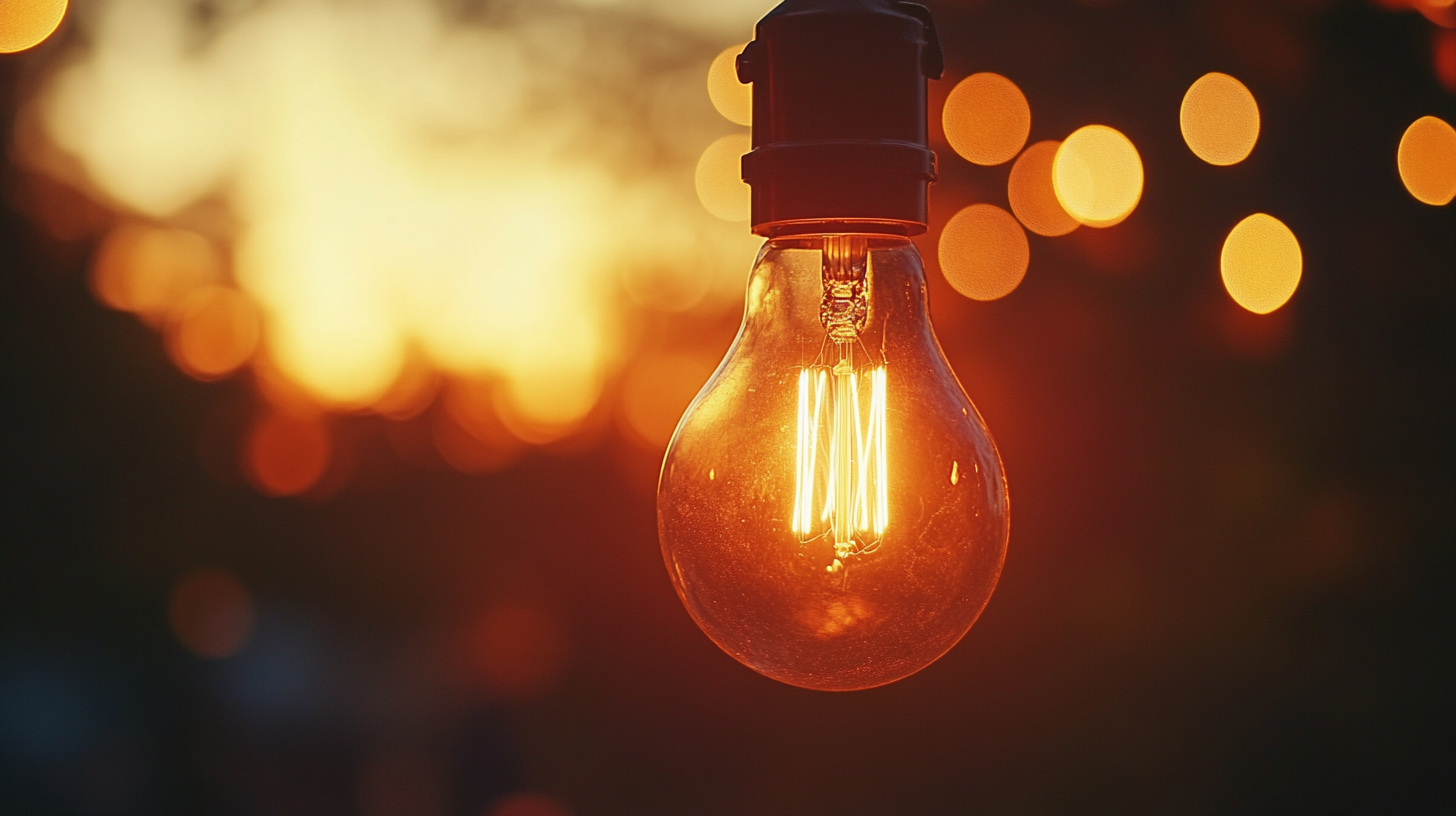Ultimate Resource for Sourcing Solar Lights Globally
Solar lights can be the latest favorite and a sustainable lighting option in the world in recent years, with a sudden increase in demand for renewable energy solutions. The lights are an innovative substitute for classical lighting, and as we try to lessen our carbon footprint and embrace environmentally-friendly measures, solar lights fit the bill. By gathering the sun's energy, solar lights minimize dependence upon electricity and hence serve the dual purposes of adding functionality and understated sophistication to your outdoors. This guide has become globally relevant as a resource or directory to source solar lights for those willing to embrace solar illumination, be they individuals or organizations.
With the fast market growth of solar lights, sourcing quality products becomes an important aspect. You might need decorative garden lights, heavy-duty solar street lamps, and solar security lights; the options are many. Here is a detailed overview of solar lights, different types available, what variations to consider before purchasing, and trusted suppliers around the globe. They aim to give you the knowledge to make wise decisions, so that you can further in your solar-lit journey towards sustainability.

Global Trends in Solar Light Technology and Innovation
Research works and innovation in technology have kick-started tremendous growth in the solar light industry. The photovoltaic cell technology is witnessing further evolution for higher efficiency in capturing sunlight, thus generating lights with better performance even in low-light-level conditions. The latest solar lights come fitted with smart sensors that adjust their brightness according to ambient light levels. This practice facilitates energy efficiency and adds to battery longevity. These technological advances contribute to enhanced performance and make solar lights a better energy solution for residential and large commercial applications. As nations worldwide shift their focus on renewable energy, development in the solar light market is increasing. The trend toward integrated smart city solutions is fueling solar-powered street lighting connected to centralized management systems, allowing for real-time monitoring and maintenance. Also, smart IoT technology in solar lights creates pathways toward energy management that optimizes energy flow for safer and sustainable urban environments. The technology-sustainability coupling provides an edge because now, with technological advancement enhancement to functionality, solar lights also appeal to the global climate agenda. Furthermore, an innovative design is changing solar lights' appeal to allow for versatility while simultaneously being chic for outdoor settings. The new trends exhibit groundbreaking designs that marry aesthetics with practicality to keep the interest of a consumer base ever more sensitive to style. From understated and minimalist fixtures to artistic sculptures, the plethora of designs is widening the marketplace and beckoning a larger group of end users to embrace solar lighting. With all this innovation, the future contains a lot of promise for further innovations that will redefine the lighting industry into greener cities and sustainable living.

Key Factors to Consider When Sourcing Solar Lights
The global sourcing of solar lights requires assessment of a few key factors to qualify them for optimum product selection and supplier reliability. The most basic of these is evaluation of solar panel quality and efficiency. High-efficiency solar panels typically increase energy output by about 20%, according to the International Renewable Energy Agency (IRENA), thus sourcing from manufacturers who use tier-one solar cells can greatly enhance performance and durability, and finally, customer satisfaction.
Next, one should understand basic governing regulatory standards in different markets. According to the Global Solar Council, different certification and compliance requirements are put in place by different countries for their solar products. Adherence to these standards ensures that the solar lights are out of any legal troubles while giving customers and distributors a level of assurance. Certification by appropriate authorities opens the door for manufacturers to leverage such compliance as a market competitive advantage.
It is also worth considering the environmental and geographical conditions under which these solar lights will be installed. NREL indicates that local weather patterns can have a huge effect on solar performance. So one has to choose the appropriate solar lights designed for certain supplies, such as humidities, temperature extremes, and sunlight exposure. Therefore, it may be important for suppliers to know and provide a custom solution to those conditions because they would enhance performance and life of solar lighting.
However, possible suppliers have to be assessed on the supply chain and location of production to ensure that consistency in order taking is achieved. This is in light of the report by SolarPower Europe that highlighted that disruptions in a supply chain will always be translated into reduced delivery time and increased cost. Partnering with suppliers who are endowed with a sound logistic and backup plan might mitigate such occurrences while guaranteeing consistent delivery of quality solar lights.

Top Global Suppliers of Solar Lights: A Comparative Review
With the increase in demand for sustainable lighting all around the globe, drastic changes are taking place in solar lighting, especially supply chain-wise. The newly imposed U.S. ban against products linked to forced labor in Xinjiang has caused many companies to reassess their sourcing strategies. With over a million companies that might now be faced with scrutiny, the need for companies to source materials from other regions has become key. Companies in this new regulatory framework will have to reconsider suppliers of solar lighting products who embrace ethical consideration in their sourcing methods.
The SNEC International Photovoltaic Power Generation and Smart Energy Exhibition in Shanghai, 2024, will see a piling up of innovations in solar technology. In this important juncture, projected as the largest such event worldwide, over 3,100 exhibitors find themselves conversant in light, storage, and hydrogen solutions in the renewable energy domain. The exhibition champions both top suppliers and crucial technological developments aiding the solar light manufacturers.
Manufacturers in the U.S. are increasing domestic capacity to support the solar industry reflecting a national focus for reducing dependence on foreign supply chains. The recent forecast that the top ten global suppliers of photovoltaic modules will comprise such well-established players indicates that robust competition and innovations in manufacturing processes prevail. Certain reports suggest that by 2030 the global lighting market will use about 13 percent of all electricity, forecasting that solar lighting along with advancements in technology could help achieve such carbon reduction goals, which would complicate and enhance the sourcing landscape. An unwavering commitment to sustainability translates not just into product development but also shapes the supply chain's overall consideration in environmental performance.

Sustainability in Solar Light Production: What You Should Know
Sustainability is becoming one of the core demands of solar light production in a world yearning more on renewable energy. Most manufacturers are now looking into environment-friendly eco-measures that reduce their carbon footprints as they generate maximum energy efficiency. The whole production process contributes to sustainability, from raw materials sourcing to final assembly. Eco-friendly materials, such as recycled plastics, sustainably harvested metals, etc., for client production furnishes countless savings in environment-based expenditures, and promotes the concept of a circular economy.
Innovation in solar technology further comprises enabling production processes both economically and ecologically. Developing more innovative photovoltaic cells improves the efficiency of solar panels, whilst battery technology advanced energy storage possibilities. All this makes way for producing solar lights using lesser energy consumption with higher reliability in different conditions. Investing in research and development will enable manufacturers to create sustainable products that are economically feasible for consumers.
Finally, the supply chain should be kept as transparent as about sustainability issues. Consumers increasingly consider eco-friendliness when selecting products, so businesses should demonstrate their investments related to sustainable practices. Clear information about sourcing, manufacturing and disposal processes is all part of that. The other pillar builds on growing markets in the care of the environment by encouraging brand loyalty and driving environmental benefit in solar lighting production.
Practical Tips for Successful Sourcing of Solar Lights Worldwide
It would be the first step in sourcing international solar lights via the market: study and appreciate the demand for solar lighting solutions worldwide. Analyze the customer's preferences and regulations put forth in various regions. Such factors may highly influence your sourcing decisions. Follow the trends of sustainable and energy-efficient properties, which define consumer choices. Through various online and report sources, one may clearly comprehend what types of solar lights are in demand and the reason behind market preference over the rest.
A strong relationship with suppliers is vital for successful sourcing. Visit international exhibitions and trade fairs where solar lighting manufacturers showcase their products. Talking to suppliers gives better chances of negotiation for price, quality-save through shipment logistics. Complement personal visits with pleasant exchange of information or prior arrangements on conditions under which samples of goods are sent prior to major orders to cross-check product satisfaction with quality standards.
Investment in technology is yet another possible improvement to your sourcing strategy. Analytics tools can track trends as well as volatility in prices and processes in the supply chain. Using platforms devoted to global trade also facilitates this process of sourcing, connects to verified suppliers, and enables communication. Clearly defined and well-laid-out strategies for using these practical tips can be very instrumental in the strenuous sourcing aspect of solar lights internationally without leaving behind any quality and cost economies.





